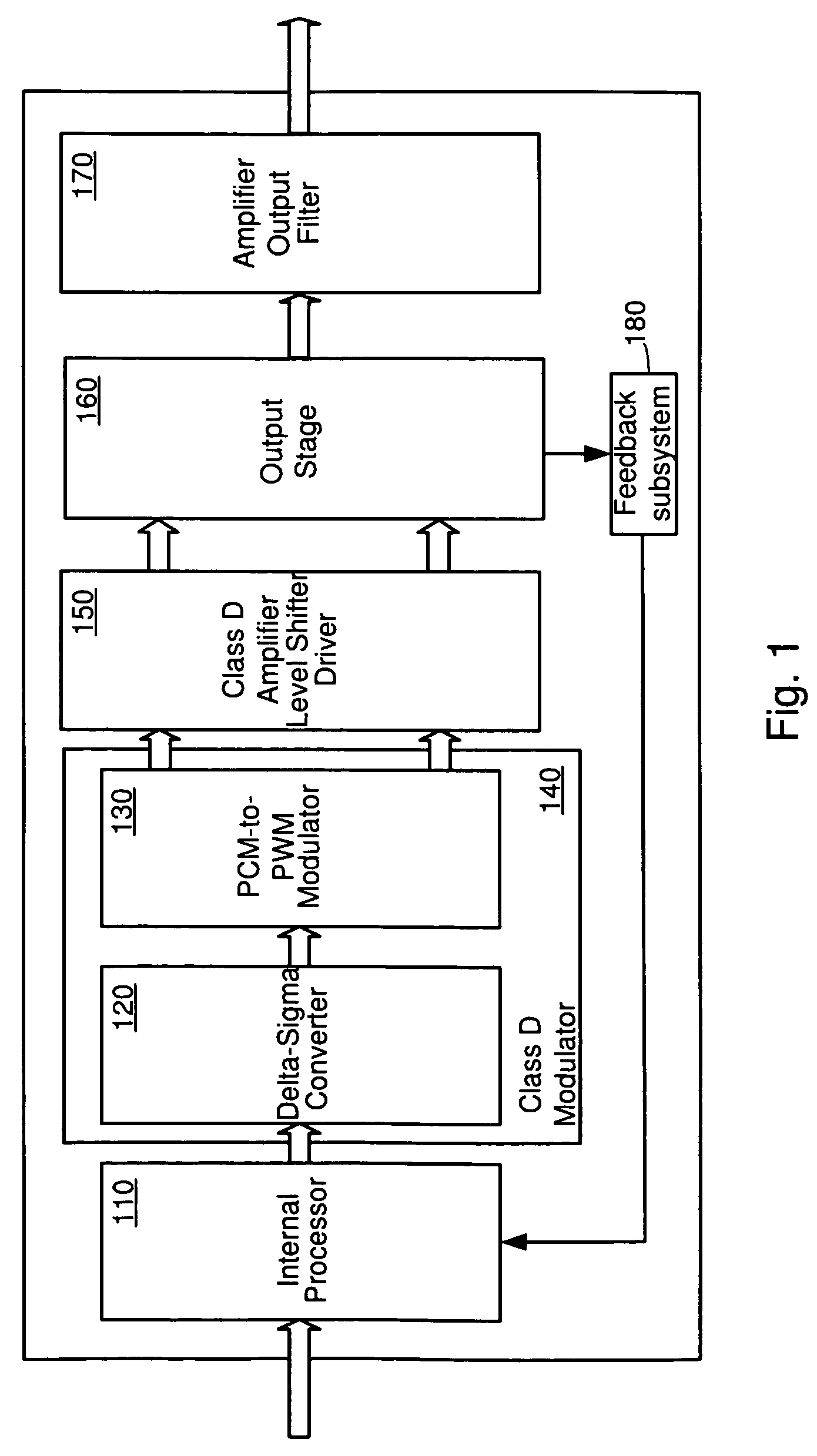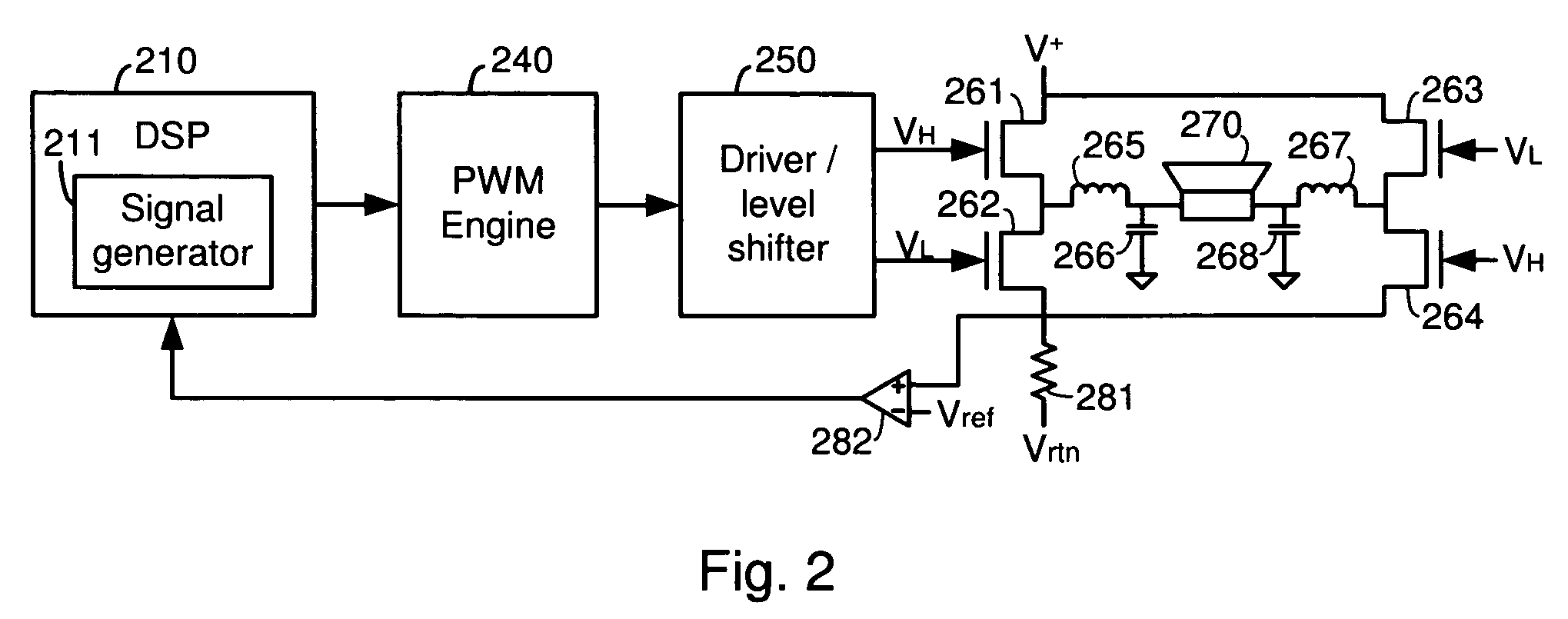Systems and methods for load detection and correction in a digital amplifier
a digital amplifier and load detection technology, applied in single-ended push-pull amplifiers, electric devices, instruments, etc., can solve the problems of low performance applications, complex and costly applications to implement, and the solution is not widely accepted, so as to achieve less complex, easy to implement and maintain
- Summary
- Abstract
- Description
- Claims
- Application Information
AI Technical Summary
Benefits of technology
Problems solved by technology
Method used
Image
Examples
Embodiment Construction
[0027]One or more embodiments of the invention are described below. It should be noted that these and any other embodiments described below are exemplary and are intended to be illustrative of the invention rather than limiting.
[0028]As described herein, various embodiments of the invention comprise systems and methods for detecting the impedance of an output load coupled to a digital amplifier and compensating for changes in the frequency response of the amplifier. One embodiment is implemented in a Class D pulse width modulated (POM) amplifier. A mechanism is provided for determining the impedance of a speaker that is coupled to the output of the amplifier. The processing of the digital audio signal is then adjusted if necessary to optimize the frequency response of the amplifier for the specific impedance of the speaker.
[0029]In this embodiment, a digital test signal (e.g., a sine wave) is generated. This test signal is processed by the amplifier to produce a corresponding analog...
PUM
 Login to View More
Login to View More Abstract
Description
Claims
Application Information
 Login to View More
Login to View More - R&D
- Intellectual Property
- Life Sciences
- Materials
- Tech Scout
- Unparalleled Data Quality
- Higher Quality Content
- 60% Fewer Hallucinations
Browse by: Latest US Patents, China's latest patents, Technical Efficacy Thesaurus, Application Domain, Technology Topic, Popular Technical Reports.
© 2025 PatSnap. All rights reserved.Legal|Privacy policy|Modern Slavery Act Transparency Statement|Sitemap|About US| Contact US: help@patsnap.com



